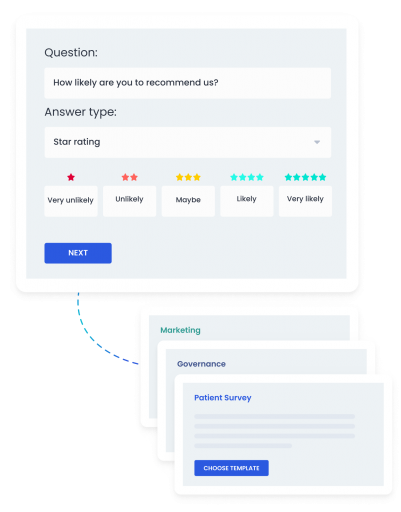A strong brand identity is crucial for any dental practice that wants to differentiate itself from competitors and attract more patients. A well-designed brand identity can help establish your practice’s personality, values, and unique selling proposition, and build trust with patients.
In this post, we’ll provide guidance on how to create a brand identity that reflects your practice’s personality and values and appeals to your target audience.
Understanding healthcare branding
Healthcare branding involves creating a unique identity and perception for your dental practice that differentiates it from competitors and helps build patient loyalty. The goal is to establish a strong, recognisable brand that resonates with patients and conveys the values, expertise, and quality of care provided by your practice.
Elements of effective dental branding
Creating an effective brand identity for your dental practice involves more than just designing a logo or a catchy slogan. It includes all aspects of the patient experience, starting from the initial appointment scheduling to the treatment itself and the follow-up care. The practice’s brand should be reflected in its physical environment, online presence, staff interactions, and overall patient communication.
The importance of strong branding for dental practices
In today’s digital world, patients rely heavily on online reviews to evaluate healthcare providers, including dental practices. According to a survey conducted by Software Advice, 84% of patients use online reviews to evaluate healthcare providers, and 77% use online reviews as their first step in finding a new doctor. Therefore, it is crucial for dental practices to establish a strong online presence and reputation to attract and retain patients.

1. Define your brand identity
Before creating any visual elements, it’s essential to define your brand identity. This involves determining your brand values, target audience, and unique selling proposition.
Defining your brand values means determining what your dental practice represents and how you want your patients to perceive it.
This involves asking questions like:
- What is the mission of our dental practice?
- What are our core values and beliefs?
- What do we want patients to associate with our brand?
Once you have a clear understanding of your brand values, you can use them to guide all aspects of your practice, from the types of services you offer to your marketing materials and messaging.
Determining your target audience involves understanding the demographics, needs, and motivations of your ideal patients. Patient surveys and feedback can help you refine your target audience and improve the overall patient experience. By understanding your target audience, you can tailor your branding and marketing efforts to appeal to them and increase patient retention.
Your unique selling proposition is what sets your dental practice apart from your competitors. This could be a specific service, use of technology, or commitment to patient satisfaction. Conducting a competitive analysis can help you identify areas where you can excel and use those as the basis for your USP.
2. Design your logo
Designing a logo that accurately reflects your dental practice’s identity is an important step in creating a strong brand identity. Your logo should be simple, memorable, and easily recognizable. It should also reflect your practice’s personality and values.
When designing your logo, consider working with a professional graphic designer who can help you create a logo that accurately represents your brand. A graphic designer can work with you to understand your practice’s unique selling proposition and target audience and create a logo that resonates with them.
Here are some suggestions to keep in mind when designing your logo:
- Keep it simple: Your logo should be easy to recognise and understand at a glance. Avoid cluttering your logo with too many details, which can make it difficult to read and understand.
- Use appropriate colours: Choose colours that reflect your practice’s personality and values. For example, blue is often associated with trust and professionalism, while green is associated with health and wellness.
- Consider typography: The font you choose for your logo can convey a lot about your practice’s personality. For example, a bold, sans-serif font may suggest strength and confidence, while a script font may suggest elegance and sophistication.
- Make it versatile: Your logo will be used across a variety of mediums, from your website to business cards and signage. Make sure your logo looks good and is legible at different sizes and on different backgrounds.

3. Establish your tone of voice
Your tone of voice should be consistent across all communication channels, including your website, social media, and marketing materials. It should also reflect your practice’s personality and values and be tailored to your target audience.
Here are top three tips to help you establish your tone of voice:
- Be conversational: Using a conversational tone can help build trust with patients and make them feel more comfortable. Avoid using technical language or jargon that may be difficult for patients to understand.
- Provide value: Your tone of voice should not only be friendly and approachable but also informative and educational. Patients will appreciate content that is useful to them, such as tips on oral hygiene or information on dental procedures.
- Use feedback: Patient feedback can be a valuable tool in refining your tone of voice. Consider using patient surveys or other feedback methods to better understand how patients perceive your practice’s communication style and make adjustments accordingly.
4. Personalise the patient experience
Personalising the patient experience and listening to patient feedback can play a crucial role in creating a strong brand identity for dental practices. By tailoring your services and communication to meet the specific needs and preferences of your patients, you can build a loyal patient base and establish your practice as a trusted and reliable provider of dental care.
Personalising the patient experience involves going beyond the standard treatments and procedures and taking the time to understand each patient’s unique needs and preferences. For example, you can offer personalised treatment plans that take into account a patient’s medical history, lifestyle, and dental goals. You can also provide a comfortable and welcoming environment, with amenities such as music, TV, or magazines, to make the patient feel at ease.
Actively seeking out and responding to patient feedback can demonstrate your commitment to patient satisfaction and continuous improvement. By doing so, you can identify areas where you excel and where you can improve, and make adjustments to your services and communication accordingly.
Patient feedback can offer valuable insights into how your branding resonates with your target audience, and whether your messaging effectively communicates your values and services. Regularly tracking patient feedback helps measure the effectiveness of your branding campaigns and ensures that you meet the expectations and needs of your patients.
Top tip: Doctify’s Surveys tool is a powerful tool that can help you take your feedback to the next level. By creating your own surveys, you can gain in-depth insights into patient experiences that will help you improve your dental practice’s brand identity. The survey responses will remain private from the public, so patients can provide honest feedback.

Here are some sample questions you can ask your patients using Doctify’s Surveys:
- Are there any specific services or treatments you would like to see us offer in the future?
- What do you think makes our dental practice unique compared to others you have visited?
- What made you choose our dental practice over others?
Learn 10 tips for improving the patient experience in dentistry
How Doctify can help
As a dental practice, establishing a strong online presence is crucial to attract relevant patients and grow your business. Doctify is a professional profile platform in healthcare that allows you to clearly display the treatments and procedures you offer, highlight your key expertise, link all your practice locations, and optimise your search presence with a single profile reflecting your entire practice.
Doctify also offers tools to automate your patient feedback collection and showcase your reviews on your website using Doctify widgets. By automating your feedback collection, you can save time and resources, while ensuring that you consistently receive valuable feedback from your patients.
Contact us today to learn more about how Doctify can help you create a patient-centric experience that promotes growth and cultivates brand loyalty.




